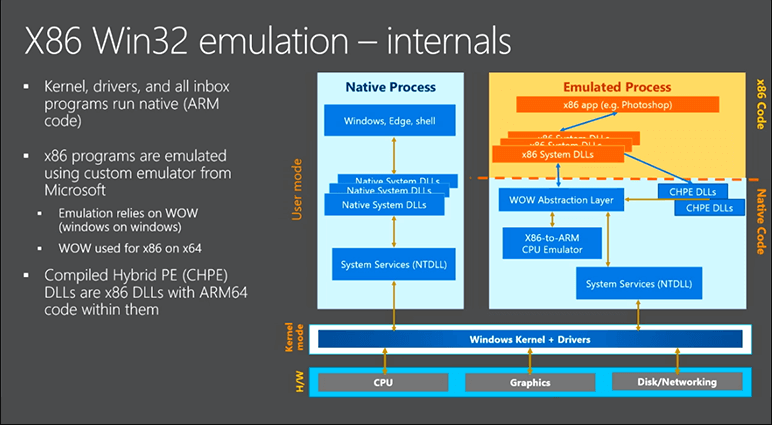Windows 10 ARM emulator: What it is and what it does
2 min. read
Updated on
Read our disclosure page to find out how can you help Windows Report sustain the editorial team. Read more

Since the Fall Creators Update, users who have ARM64 (or ARM32) machines are able to run Windows 10 without any issues. Two supported editions are Windows 10 Pro and Windows 10 S. This brings a lot of advantages and diversifies a bit stalled development of the platform.
How does Windows 10 ARM emulator work?
Now, do not mistake this for the Windows 10 Mobile, as the Qualcomm-powered CPUs are finding their place on more and more non-smartphone devices. This breakthrough allows users to utilize low power consumption and mobile data features on the ARM architecture.
Since all UWP applications for standard x86 and x64 processors flawlessly emulate on ARM, you get the full Windows 10 experience with all the goodies an ARM CPU brings to the table.
But how does Windows 10 ARM emulates x86 and x64 applications? Or can it do it in the first place? It can do it and in a seamless manner, for that matter.
The only exception being x64 Win32 applications which are not supported. The applications don’t need to be recompiled or modified thanks to emulation of WOW64 layer.
It works by compiling blocks of x86 instructions into ARM64 instructions with optimizations to improve performance. Accordingly, these instructions are translated and cached, so the application modules are optimized to work in a seamless manner.
Primarily, if the app you want to use has an ARM version, that’s the version you’ll get. On the other hand, if that’s not the case, the system will provide you with the version for x86 architecture.
What are your thoughts on Windows 10 on ARM-powered devices? Tell us in the comments section below.
RELATED STORIES YOU SHOULD CHECK OUT:
- Confirmed: Microsoft now accepting ARM64 apps on its Store
- What file encryption software should I use on Windows 10?
- 2018 List: Best free Android emulators for Windows 10/8.1/7
- 5 best emulators for PUBG Mobile on PC for a new gaming experience









User forum
0 messages